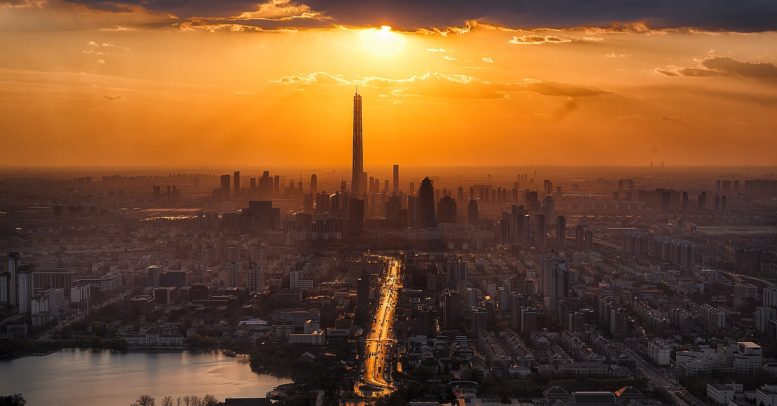
How long is a skyscraper meant to last?
by Punctual AbstractCity skylines are iconic. One glance at the skyline of major cities like New York, Los Angeles Chicago or Seattle and you know what you’re looking at. Skyscrapers are more than just buildings. They’re iconic. They work their way into the very fabric of a city’s identity.
We’ve written in the past about the cities with the oldest housing stock in the country, which got us thinking:
What’s the intended lifespan of a skyscraper? How long are they designed to last?
The earliest skyscraper, the Great Pyramid of Giza, was built in 2540 BC, and it’s still standing.
So how long will the Burj Khalifa, the world’s tallest building last? And what about the Empire State Building, which was built in 1931 and held the title for the world’s tallest for nearly 40 years until the construction of the Sears Tower in 1970?
Will they still be standing in the year 7,000 AD – the equivalent if they exist as long as the pyramids? First let’s look at the stresses, or ‘loads’ in engineering-speak, that modern skyscrapers are meant to withstand.
Lightning
One common stress upon skyscrapers is lightning strikes, one bolt of which can pack up to two billion volts. During the rare storms that pass through
Skyscrapers are designed with protective enclosures, similar to the wire mesh on microwave oven doors, that divide and subdivide the energy from a lightning strike and guide it to the ground where it is spread out harmlessly.
Here’s a cool article with many pictures of famous skyscrapers being hit by lightning.
Wind
Wind is the most obvious stressor placed upon skyscrapers, and its speed increases with elevation. When hitting a flat face, wind whirls into an organized gust which alternates first to one side of the face and then the other, causing the object, in this case a building, to sway. If the wind is strong enough, the building can collapse.
That’s why skyscrapers are designed with irregular shapes and angles that prevent wind from becoming organized. Features which are often thought of as simply for style or artistry are actually there to divide the wind and direct it away from the structure.
According to Bill Baker, the structural engineer behind the Burj Khalifa, the typical building is designed to withstand winds from a 700-year storm, while larger skyscrapers are designed to withstand events that occur just once every two millennia.
Earthquakes
For certain regions, like the West Coast, the primary concern is earthquakes. In these areas, resonance, a phenomenon in which a vibrating system or external force drives another system to oscillate with greater amplitude at specific frequencies, is the key concern.
In these videos, shot during a 9.0 magnitude earthquake in Tokyo, you’ll see the power of resonant design as the skyscrapers sway dramatically but do not collapse.
The Verdict
So, will the skyscrapers of today still be around in the year 7,000 AD? According to Bill Baker, the man responsible for the structural integrity of the tallest skyscraper in the world, yes.
Skyscrapers constructed after the 1930s were made of concrete reinforced with steel, as opposed to just steel, which gave them the tensile strength of steel and the compressive strength of rock. They can resist both stretching and squeezing forces.
The earliest steel skyscrapers, like the Empire State Building, which date from the 1930s are least likely to remain standing in 7,000 years because they are constructed almost exclusively of steel, meaning they have exceptional tensile strength but are quite rigid and inflexible.
The primary threat to today’s skyscrapers isn’t that they’ll collapse, but that they’ll be torn down to make way for something better.
It’s predicted that the trend of people moving from rural areas into cities will only accelerate in coming decades, forcing us to build ever higher into the sky. In 100 years, today’s tallest skyscrapers could be looked at the same way we view a ten story brick structure built at the beginning of the 20th century.
Your National Solution with a Local Touch
Punctual Abstract is a national title abstracting company located in Harvey, LA. Whether you need an abstractor for a certain county or region, or you’re looking for a national provider, Punctual Abstract is here to help.
We have extensive experience performing commercial and residential abstracts of all kinds and perform complete title searches plus attorney opinion package-deals all with the same average turn-time of 24-48 hours!
Visit our homepage or contact us today for more information.
